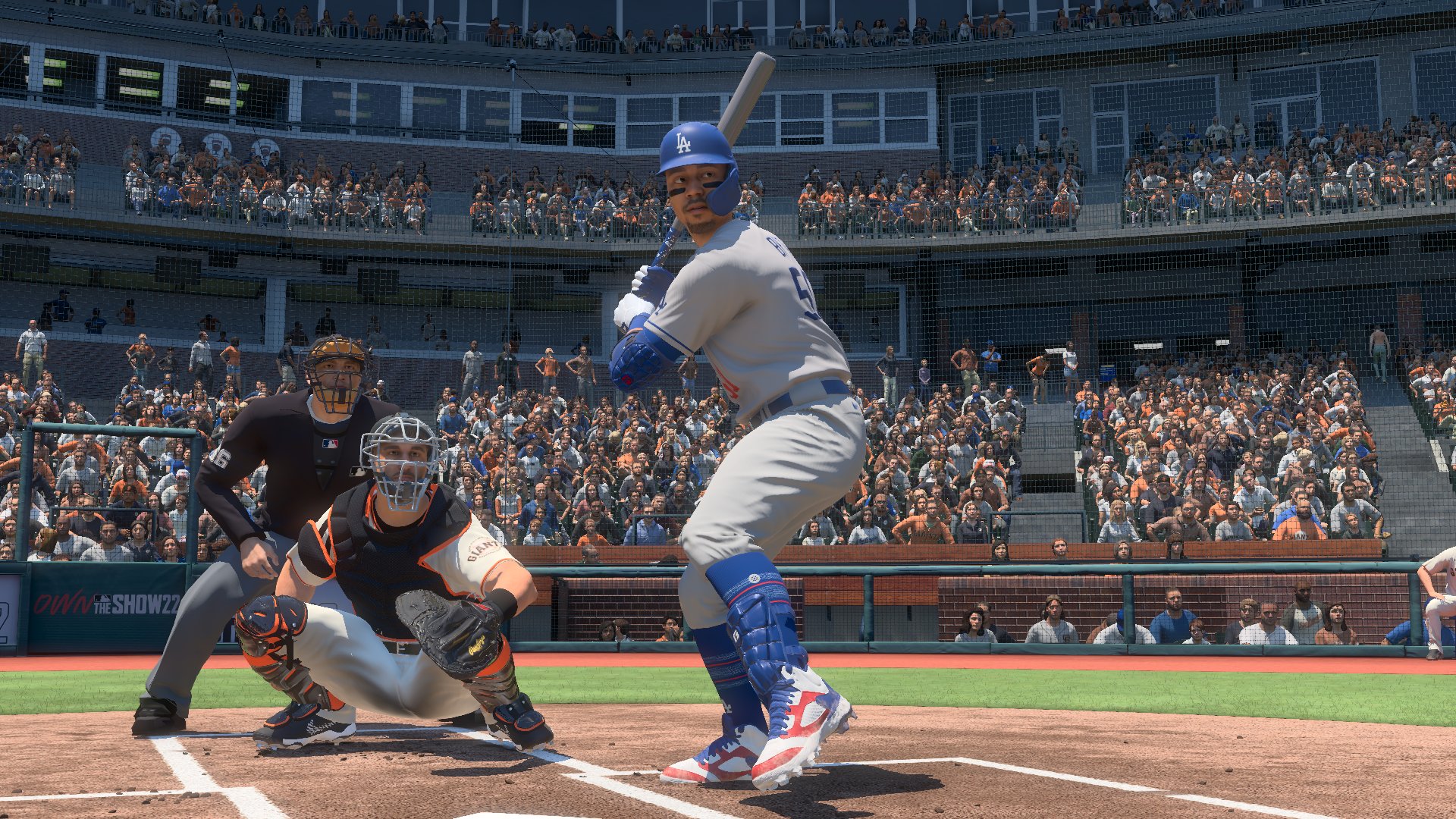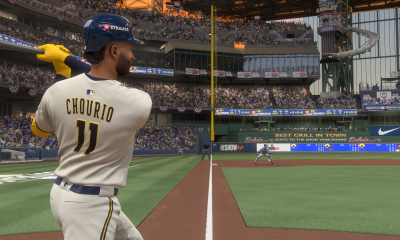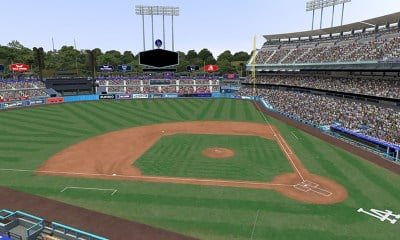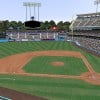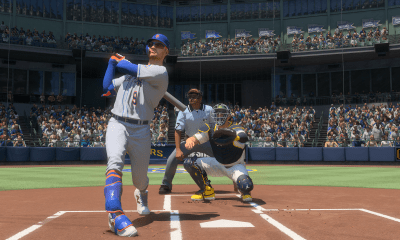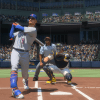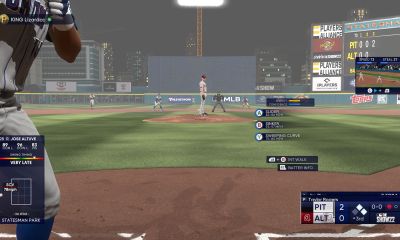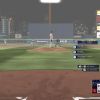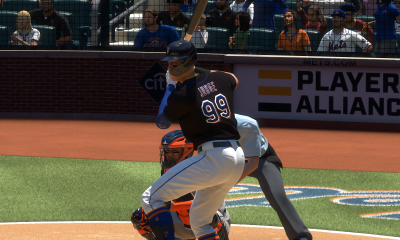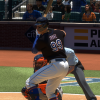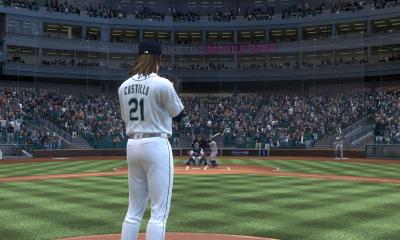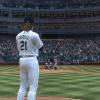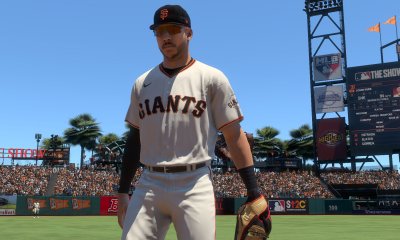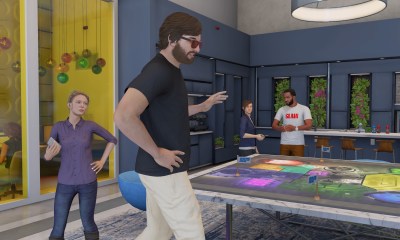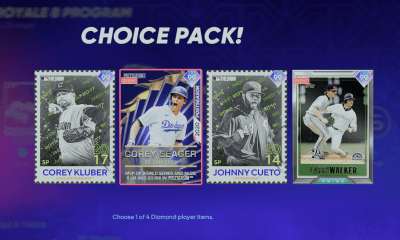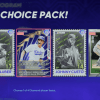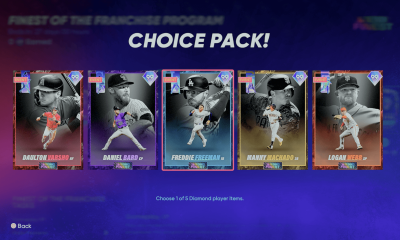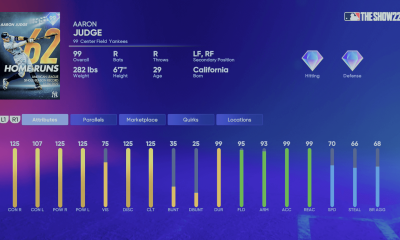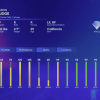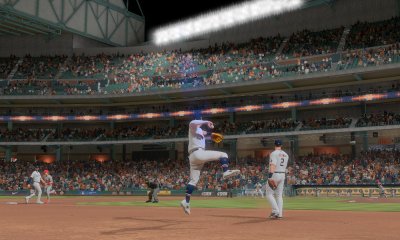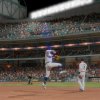MLB The Show 22
MLB The Show 22 Sliders: Realistic Set for Experienced Players
Like most sports video games, MLB The Show 22 doesn’t play exactly the same online as it does in single-player modes against the CPU. One significant difference, for instance, is that the AI can be manipulated to play either easier or harder depending on how much of a challenge you want. You can find a lot of slider sets through the MLB The Show community, including quite a few in the forums of this website. Using a few of those as a resource when starting out, I slowly began to experiment with altering certain sliders on my own when I still wasn’t seeing realistic stats in some categories. As someone who has played MLB The Show every year since the release of the first game in the series, my own MLB The Show 22 sliders are meant for experienced players who are looking for a challenge and are willing to lose games when they don’t play well.
As with any sliders, these are not meant to be gospel, and people can feel free to veer from them wherever you like if you’re not getting true-to-life results. As I outline my own personal preference in settings and sliders, I’ll also offer some explanation around how I arrived at these values and why I believe they work well at both replicating baseball and having you feel as if you’re as involved as you can possibly be in every pitch.
MLB The Show 22 Realistic Sliders
Pitching
Difficulty – Legend
It’s entirely possible that these sliders would work just as well on lower difficulties, but I’ve only tested them on Legend so I can’t vouch for the results on anything below that. It really comes down to how adept you are with whichever pitching interface you want to use, but you want the AI be skilled enough to punish you regularly when you leave pitches up and over the plate via mistakes with your preferred interface.
Interface – Meter
If you browse the sliders on the forums on this site, you’ll find a lot of slider sets that advocate for using classic pitching because this will only utilize the ratings of the pitcher involved in determining where the ball goes. While this may ultimately yield the most realistic results, it also removes all of the fun of pitching by eliminating user input entirely and reducing the entirety of your interaction to the push of a single button on every pitch. If you’re fine with that kind of major reduction to your role, then by all means go with classic pitching. This is actually what I ended up settling on in MLB The Show 21 when I couldn’t find any other way to get realistic walk rates through any of the other interfaces.
In MLB The Show 22, I still wasn’t able to concede anything approaching a realistic number of walks when using my own preferred interface of pinpoint pitching. Even though it’s only been around since last year, I’ve already become good enough at the pinpoint interface to obtain perfect feedback most of the time, and this is bound to translate to impeccable control no matter who I happen to be controlling on the mound. While I’d like to believe this is largely because of my amazing stick skills, I honestly think it has as much to do with how easy the pinpoint interface remains as developers continue to indoctrinate more people into using it.
On the other hand, the meter interface has been around since the start of the series and players have become so familiar with it that developers have made the margin for error rather slim comparatively. Or, at least this is what I keep telling myself when I fail to hit my release point consistently, but it could just be that I’m not quite as good at timing on the meter interface as I am at performing the stick movements in the pinpoint interface. Either way, meter presents such a formidable challenge for me that it’s become an ideal way to keep me involved and performing on the mound in a way that’s based on whether I happen to be able to get my timing down on any given day.
Human Pitcher Control & Consistency – 0
Even though I may be worse at meter than pinpoint pitching, my abilities are still such that I need to make the interface a little bit harder in order to obtain realistic walk rates. To do this, I have gradually taken these control and consistency sliders down, and it’s only when they’re reduced all the way to 0 that pitchers will begin to walk hitters as frequently as you see in real life. This might seem extreme, but rest assured that I still have games where pitchers with good control won’t walk any batters at all. These are just offset by other games where a starter who typically has poor command might wind up walking 3 or 4 over the course of 6 or 7 innings of work.
CPU Timing – 0
Despite the fact that CPU hitters tend to chase some pretty bad pitches (which can make it harder to walk anyone), they’re also able to make a lot of contact and put balls in play more than you see in real baseball. This could be an unintended consequence of taking down those control and consistency pitching sliders, as any pitches that end up catching more of the plate than expected will often be struck by a bat. By taking the CPU Timing slider all the way down to zero, you’ll usually get a few more whiffs a game and this will help keep your strikeout numbers in line with the rest of the league.
Hitting
Difficulty – Legend
Interface – Zone
The same folks who prefer to use the classic interface when pitching tend to also favor using directional rather than zone when it comes to hitting for the same reason that it limits the impact of user input and relies more on players’ attributes. As with my pitching preferences, I lean instead towards making each at-bat as fun and challenging as possible for myself, which is why I enjoy zone hitting more than directional for its added layer of difficulty (especially on Legend) in attempting to line up your PCI with the ball.
Human Timing – 0
Fastball Pitch Speed – 6
Once you’ve played MLB The Show for a long time and can handle yourself pretty well in the batter’s box, it will become more and more rare that you’ll be sat down on strikes when using the default settings. A big factor in this is that the game seems to be fairly lenient in what kind of timing and PCI placement you need to have in order to make some kind of contact with the ball, whether fair or foul. To help mitigate this, you can tune the human timing slider all the way down to zero and this will make your window for potential contact with a ball considerably smaller. Once it’s easier to get fooled on a pitch and have you either out in front or late, you’ll get more swings and misses and your strikeouts will start to increase against elite pitchers. If you’re still finding that you aren’t striking out at a realistic rate (reminder: it’s quite a bit nowadays), try making the fastball pitch speed a little faster.
Human & CPU Foul Frequency – 0
To put it simply, there are too many foul balls in MLB The Show 22. Even when you push this slider down to zero for both yourself and the CPU, you’ll still see quite a few of them and wonder how much the slider is actually working. But if it decreases the number of bat tips and nicks by even a fraction and leads to slightly fewer epic 15-pitch battles between pitcher and batter, then it has to be worth making the slider adjustment.
Fielding
Throwing Interface – Button Accuracy
Throwing Meter – Off
If you’re even halfway decent at using the meter when fielding, chances are that you won’t be committing a lot of throwing errors over the course of a season. In the past, you could choose an option in the settings to have players throw according to their real-life abilities rather than basing the results on anything you do with the controller but sadly that is no longer possible. The best you can do now is remove the meter entirely to cause each throw to be more about muscle memory than knowing when to release the button based on the visual cue. It’s far from a perfect solution since you can get almost as good at working the mechanic without the meter over time, but it’s probably the best you can do at making throws a little harder to nail with accuracy.
Fielding Errors Infield & Outfield – 6
Throwing Errors Infield & Outfield – 6
Should you find that you remain too precise at whipping the ball across the infield or from the outfield, you can always try bumping these two sliders by one or two notches and that should produce more wild throws if you’re not especially attentive to your press of the buttons. I also like to increase the fielding errors in the infield and outfield as well to generate a few more realistic mishandles of the ball.
Other
Injury Frequency – 7
There are a lot of injuries in baseball. Take a look at any team’s Injured List come September, and you’ll see that the long baseball season can be a war of attrition. From serious breaks and tears that will keep players out until next season to minor scrapes and pulls that might need only a few days off to heal, there are just so many ways that guys can go down over 162 games. On the default sliders in franchise though, you just aren’t going to see as many players as you would in real life that need some time to nurse their wounds. To remedy this, you can raise the injury slider two or even three notches, and then you’ll likely soon find that you need to juggle your roster a little more than before to call up players to fill in for the fallen. I would even suggest raising the slider that affects injuries in simulated games only to ensure that these play out more like real baseball as well. You might want to stop raising that slider though the minute you have nine different players mysteriously stricken with nine different conditions that keep them out of the big game.
Baserunner Steal Ability – 6
I’ve already gone on the record in my piece on MLB The Show 22 gameplay issues in stating that the series needs to overhaul the mechanic used to steal bases and also take a closer look at some of the attributes certain players have been given that play a huge part in swiping a bag. In the meantime, you’d think that perhaps a way to slap a Band-Aid on the problem would be to increase the baserunner speed slider, but this can affect too many other types of plays and have doubles become an abundance of triples before you know it. Instead, consider bumping the more specific Baserunner Steal Ability slider a notch or two. By doing this, you’ll see runners routinely getting better jumps on steal attempts, and the percentage of players getting thrown out will be more in line with the real life numbers. This combats both the way nearly every CPU pitcher can be a little too mindful of keeping a runner close to the base, and the way most catchers (including your own) tend to be more accurate than you see in the majors with their throws to gun runners down.


